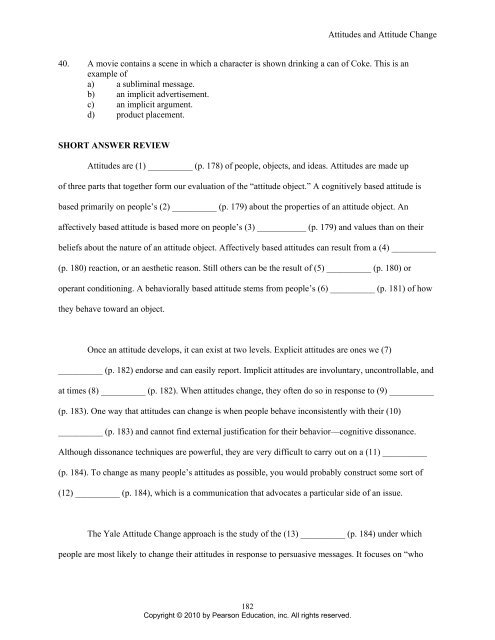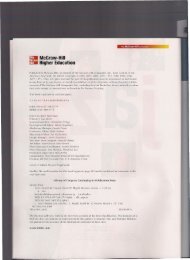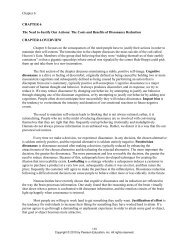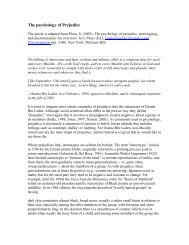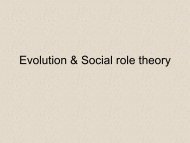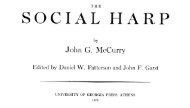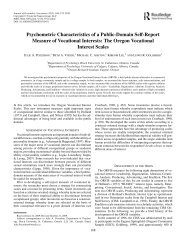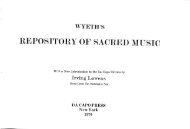Attitudes and Attitude Change CHAPTER 7 Attitudes and Attitude ...
Attitudes and Attitude Change CHAPTER 7 Attitudes and Attitude ...
Attitudes and Attitude Change CHAPTER 7 Attitudes and Attitude ...
Create successful ePaper yourself
Turn your PDF publications into a flip-book with our unique Google optimized e-Paper software.
182<br />
Copyright © 2010 by Pearson Education, inc. All rights reserved.<br />
<strong><strong>Attitude</strong>s</strong> <strong>and</strong> <strong>Attitude</strong> <strong>Change</strong><br />
40. A movie contains a scene in which a character is shown drinking a can of Coke. This is an<br />
example of<br />
a) a subliminal message.<br />
b) an implicit advertisement.<br />
c) an implicit argument.<br />
d) product placement.<br />
SHORT ANSWER REVIEW<br />
<strong><strong>Attitude</strong>s</strong> are (1) __________ (p. 178) of people, objects, <strong>and</strong> ideas. <strong><strong>Attitude</strong>s</strong> are made up<br />
of three parts that together form our evaluation of the “attitude object.” A cognitively based attitude is<br />
based primarily on people’s (2) __________ (p. 179) about the properties of an attitude object. An<br />
affectively based attitude is based more on people’s (3) ___________ (p. 179) <strong>and</strong> values than on their<br />
beliefs about the nature of an attitude object. Affectively based attitudes can result from a (4) __________<br />
(p. 180) reaction, or an aesthetic reason. Still others can be the result of (5) __________ (p. 180) or<br />
operant conditioning. A behaviorally based attitude stems from people’s (6) __________ (p. 181) of how<br />
they behave toward an object.<br />
Once an attitude develops, it can exist at two levels. Explicit attitudes are ones we (7)<br />
__________ (p. 182) endorse <strong>and</strong> can easily report. Implicit attitudes are involuntary, uncontrollable, <strong>and</strong><br />
at times (8) __________ (p. 182). When attitudes change, they often do so in response to (9) __________<br />
(p. 183). One way that attitudes can change is when people behave inconsistently with their (10)<br />
__________ (p. 183) <strong>and</strong> cannot find external justification for their behavior—cognitive dissonance.<br />
Although dissonance techniques are powerful, they are very difficult to carry out on a (11) __________<br />
(p. 184). To change as many people’s attitudes as possible, you would probably construct some sort of<br />
(12) __________ (p. 184), which is a communication that advocates a particular side of an issue.<br />
The Yale <strong>Attitude</strong> <strong>Change</strong> approach is the study of the (13) __________ (p. 184) under which<br />
people are most likely to change their attitudes in response to persuasive messages. It focuses on “who


